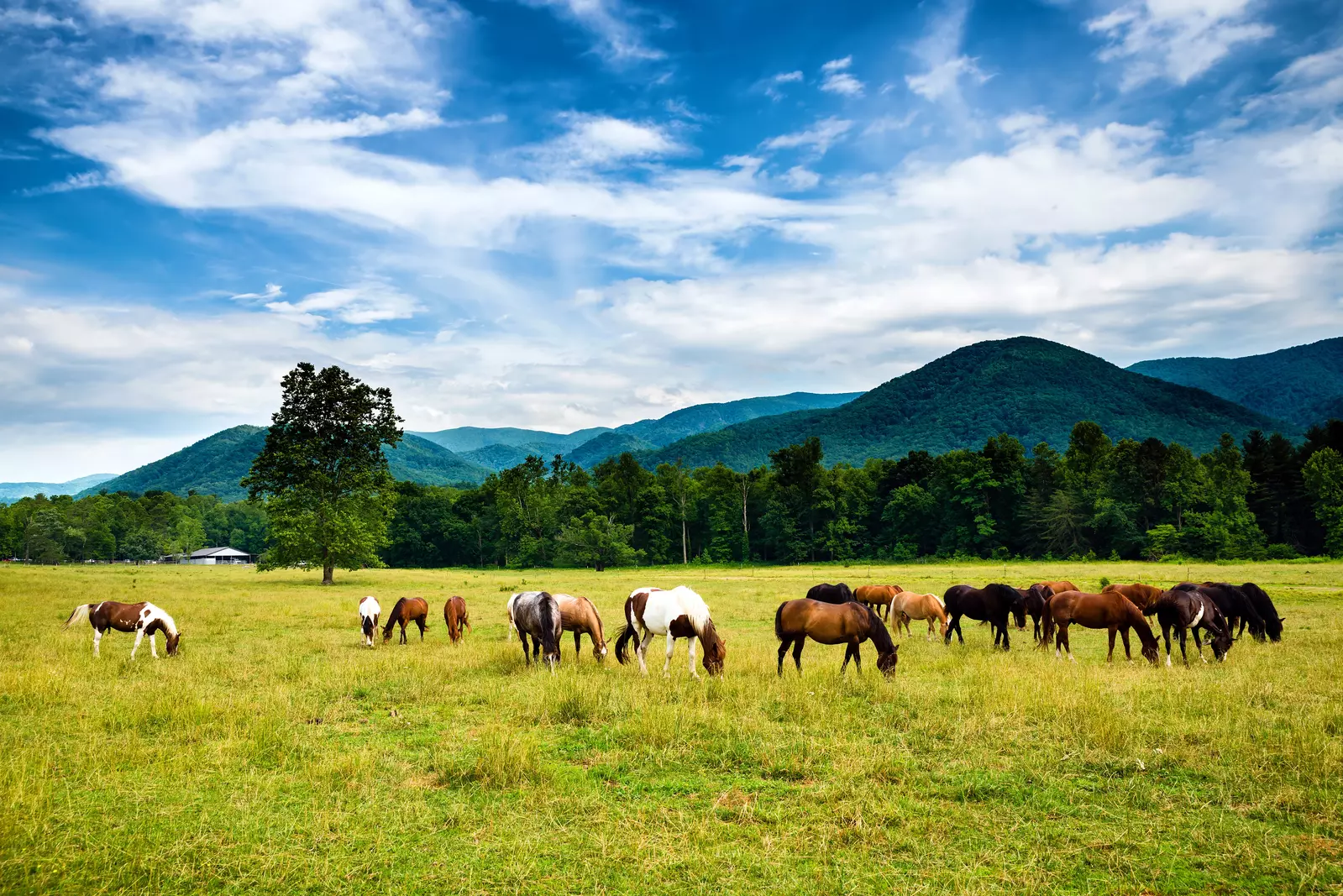One of the animals you’re most likely to see in Cades Cove is the deer. You can spot these magnificent creatures grazing in the fields and walking among the trees throughout this section of the Great Smoky Mountains National Park. It’s not uncommon to see photographers capturing photos of these beautiful animals along the Cades Cove Loop Road. If you want to know more about the deer in Cades Cove, keep reading to discover fun facts about what makes these animals unique.
1. The deer in Cades Cove are white-tailed deer.
North America is home to five main types of deer: white-tailed deer, mule deer, elk, moose, and caribou. The deer in Cades Cove and the rest of the Smoky Mountains are white-tailed deer. This is a medium-sized species of deer. Its coat is typically reddish-brown in the spring and summer and grayish-brown in the fall and winter, with a white underside. White-tailed deer fawns are covered in small white spots for the first few months as camouflage. The white-tailed deer gets its name from the white underside of its tail that it raises when it senses danger.
2. Deer have an amazing sense of smell and hearing.
 The deer in Cades Cove have really strong senses, but their sense of smell and hearing are especially impressive. Their sense of smell is roughly sixty times stronger than a human’s. These animals rely primarily on their sense of smell for protection and can pick up the scent of a predator from miles away. Their sense of hearing is also much stronger than that of a human and can pick up higher frequencies. These deer can move their ears to face different directions so that they can hear all around them without moving their head. This is helpful to hear predators approaching from any direction.
The deer in Cades Cove have really strong senses, but their sense of smell and hearing are especially impressive. Their sense of smell is roughly sixty times stronger than a human’s. These animals rely primarily on their sense of smell for protection and can pick up the scent of a predator from miles away. Their sense of hearing is also much stronger than that of a human and can pick up higher frequencies. These deer can move their ears to face different directions so that they can hear all around them without moving their head. This is helpful to hear predators approaching from any direction.
3. Their eyes are located on the sides of their heads.
If you pay close attention, you may notice that the deer in Cades Cove have eyes that are positioned on the sides of their heads, not the front. This gives these animals a much wider field of vision, allowing them to see an impressive 310 degrees around themselves. Their eyesight is much better at night than during the day, which allows them to see and escape from predators who are more active at night.
4. The deer in Cades Cove are excellent runners and jumpers.
 White-tailed deer are known for their magnificent ability to run and jump. These agile creatures can run up to 40 miles per hour at top speed and can leap up to 8 feet in the air. These abilities help them escape predators. You may not know that these animals are also excellent swimmers. They are not only fast on land, but also in the water. These creatures can swim up to 13 miles per hour.
White-tailed deer are known for their magnificent ability to run and jump. These agile creatures can run up to 40 miles per hour at top speed and can leap up to 8 feet in the air. These abilities help them escape predators. You may not know that these animals are also excellent swimmers. They are not only fast on land, but also in the water. These creatures can swim up to 13 miles per hour.
5. The eating habits of deer in Cades Cove change with the seasons.
The deer in Cades Cove are herbivores and will eat practically any plant available. During the spring and summer seasons, these creatures primarily graze on grass in open fields. This is when you are most likely to see deer in the fields along the Cades Cove Loop Road. During colder months, lush vegetation becomes less available, so the deer will move deeper into the forest to survive on bark and twigs when necessary.
6. They wag their tails when startled.
 You are probably used to seeing dogs wag their tails when they are happy or excited. The deer in Cades Cove do the opposite. These creatures wag their tails when they are startled. As prey animals, they are naturally very nervous and skittish, and they use their tails to show when they are afraid or sense danger as well as to alert predators that they have been spotted.
You are probably used to seeing dogs wag their tails when they are happy or excited. The deer in Cades Cove do the opposite. These creatures wag their tails when they are startled. As prey animals, they are naturally very nervous and skittish, and they use their tails to show when they are afraid or sense danger as well as to alert predators that they have been spotted.
More Fun Facts About Cades Cove Wildlife
Now you know a bit more about the fascinating deer in Cades Cove. Are you interested in learning more about the animals in this section of the Smoky Mountains? Check out these fun facts about Cades Cove wildlife to discover more about the animals you’re likely to see during your visit.









